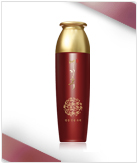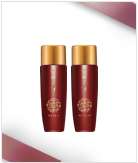What is the Best Chemical Peel Treatment for Anti-Aging?
Chemical peel treatments are a great way to erase the lines of time – as in those fine lines and wrinkles that you have been wanting to get rid of. There are a variety of different at home peels you could try for anti-aging. Some of the varieties of face peels are described below to help you decide which one is right for you. Light Chemical Peel – Light face peels are those in the alpha-hydroxy acids (AHA) and the beta-hydroxy acids (BHA) category. These include glycolic acid peels, salicylic acid peels, and lactic acid peels. These can be performed either by a skin care professional such as an aesthetician or dermatologist or with a chemical home peel kit. With a light chemical peel, there is no need to be given anesthesia. You will experience only a slight sting but no pain. These types of acid peels take just 10 to 15 minutes each. After an AHA or BHA chemical skin peel, you will see the skin begin to slough off and may notice a mild redness for a day or two at which point you can resume your daily routine. Six to twelve at home peels are needed to see significant results depending on your own skin condition.
Moderate Chemical Peel – Medium chemical peel treatments commonly use an ingredient referred to as Tricholoroacetic Acid (TCA). Sometimes with a TCA peel, anesthesia is given but the peel itself is said to have a numbing effect. It gives off a very warm sensation which some individuals may find uncomfortable. A Jessner peel is also a commonly used medium chemical peel which is a combination of glycolic acid, salicylic acid, and resorcinol. Medium chemical peels do not need to be performed as much or as often as light chemical peels for great results. They are only recommended every three to six months for best results. TCA and Jessner peels are great for all skin tones, even olive and darker complexions which is a great benefit when dramatic results are desired more quickly. Deep Chemical Peel – These deeper face peels will deliver the most dramatic results given that they use the most powerful chemical peel solution available and are solely performed by a doctor or skin care professional. Deep peel solutions are not available over the counter and should not be attempted by the chemical home peel user. Chemical skin peels are truly one of the most effective methods to improve the appearance of wrinkles. recommends trying these glycolic acid peels, salicylic acid peels, and lactic acid peels for your anti-aging skin care treatments.
Tags: acid peels, at home peels, chemical home peel, chemical peel, chemical skin peel, face peels, glycolic acid, glycolic facial peel, glycolic facial peels, glycolic peel, glycolic peels, glycolic treatment, jessner peel, jessner peels, lactic acid, lactic acid peels, salicylic acid, salicylic acid chemical peel, salicylic acid facial peel, salicylic acid peels, salicylic peel
What Type of Chemical Peel Should I Try?
Are you thinking about trying a chemical skin peel and wondering where to start? There are many different kinds of home face peels. One formula might be better suited for your skin than another – how do you know what to choose? One important factor in the differences in home face peels is the pH level. Your skin is made up of several different components, including water, protein, lipids, minerals and chemicals. The protein in your skin is sensitive to the level of pH with which it comes in contact. When the skin’s proteins react with an acid, they are broken down – and this is exactly what a chemical peel strives to do. Existing skin tissues are destroyed, and new tissue grows to replace the old. Products with a low pH feature a stronger acid. This means that high pH products offer increased breaking down of old skin and growth of new skin tissues. Conversely, products with a high pH contain a weaker acid, resulting in a more gentle reaction with existing skin and slower growth of new skin tissues. If you’re trying a chemical peel for the first time, or if you have sensitive skin, you might want to start out by choosing a product with a higher pH. Skin Rx’s 15% Glycolic Smoothing Gel features a pH of 3. Even if your skin is sensitive, 15% Glycolic Smoothing Gel can be used several times a week as a peel – simply apply to clean, dry skin and remove after 5-10 minutes. Those with less sensitive skin can leave it on for maximum results.
If you’re ready for a stronger formula, try 30% Glycolic Acid. With a lower pH (1.9), our 30% Glycolic Acid offers a professional strength peel. Skin Rx’s formula features pharmaceutical grade quality and is made from natural fruit acids (alpha hydroxy acids). Our Glycolic Acids are available in convenient kits, which include our Peel, Pre-Peel Prep, fan brush applicator, and dispensing dish, enclosed in a zippered bag for ease and convenience. Tags: at home peels, chemical peel, chemical skin peel, glycolic acid, glycolic acid products, glycolic facial peel, glycolic peel, glycolic peels, glycolic treatment, professional strength glycolic, sensitive skin, the best glycolic acid
What is the Difference in Chemical Peel Treatments vs. Microdermabrasion Treatments?
Both chemical peel treatments and microdermabrasion treatments are used to resurface and exfoliate the skin. The treatments work in different ways to achieve similar results. Microdermabrasion is recommended to improve superficial skin imperfections. This includes mild acne scars, age spots or sun spots, enlarged or visible pores, and fine lines. A chemical peel, whether it is lactic acid, glycolic acid, salicylic acid, or other variation, is recommended for more serious skin conditions such as deep or severe acne scarring and moderate wrinkles or extensive sun damage. This means that the recovery time from a chemical peel may be longer as well.
Microdermabrasion treatments come in just one strength, whereas a chemical skin peel is available in various strengths ranging from mild to medium to deep. A deep chemical peel is usually only administered by a skin care professional who may use anesthetic due to pain or discomfort involved. Microdermabrasion treatments do not hurt at all, even with several treatments. As far as recovery time involved for a chemical peel, it will depend on what acid was used and at what strength. If you are looking for something mild, a glycolic acid peel is recommended. While they require more than one treatment due to their mildness, glycolic acid peels do produce great results over time. Other face peels, such as a Jessner peel, may produce redness which lasts a bit longer and you may experience a burning sensation as they are a bit stronger due to the ingredients used. Microdermabrasion on the other hand, requires no downtime at all and the recovery takes just a few hours. When it comes to results, microdermabrasion will require several treatments to be optimally effective, sometimes up to ten or twelve treatments scheduled two weeks apart. A maintenance session of microdermabrasion treatments is then recommended every couple of months. In contrast, a deep chemical peel needs only one treatment. A medium chemical peel will require a treatment once every 6 weeks and then a maintenance treatment once every 2-3 months for a minimum of one year. Microdermabrasion and a chemical skin peel can be used on the face, chest, neck, back, and hands. Both treatments take about the same amount of time whether performed at home or in a professional skin care facility. Microdermabrasion and chemical peel treatments are both offered professionally in dermatologist’s offices and other skin care facilities but can also be performed with home versions.
At home peels, which are usually milder than deep professional chemical peel treatments typically cost between $15-$100 per treatment and home microdermabrasion kits cost anywhere from $40-$65 which include multiple treatments.



